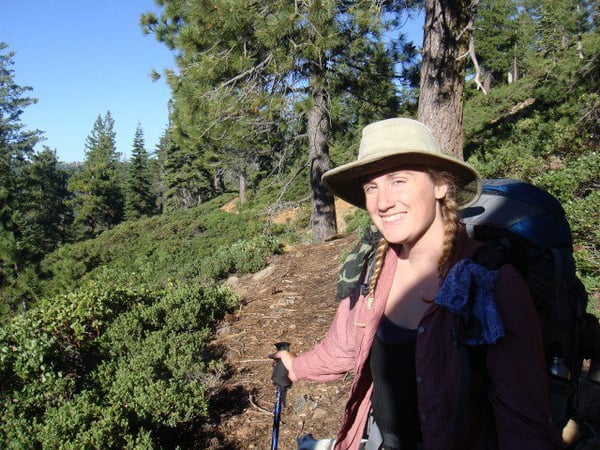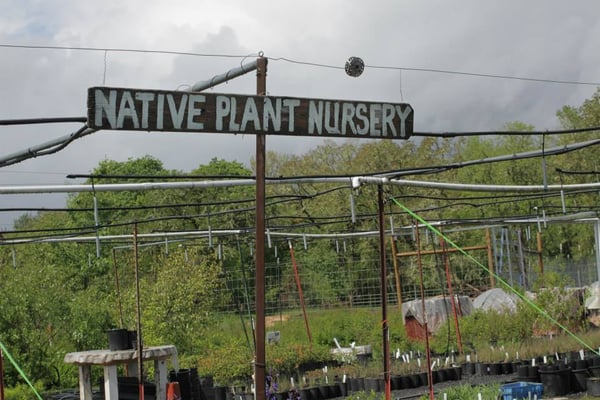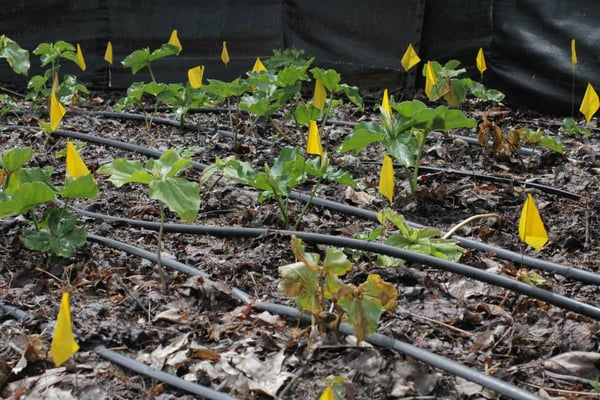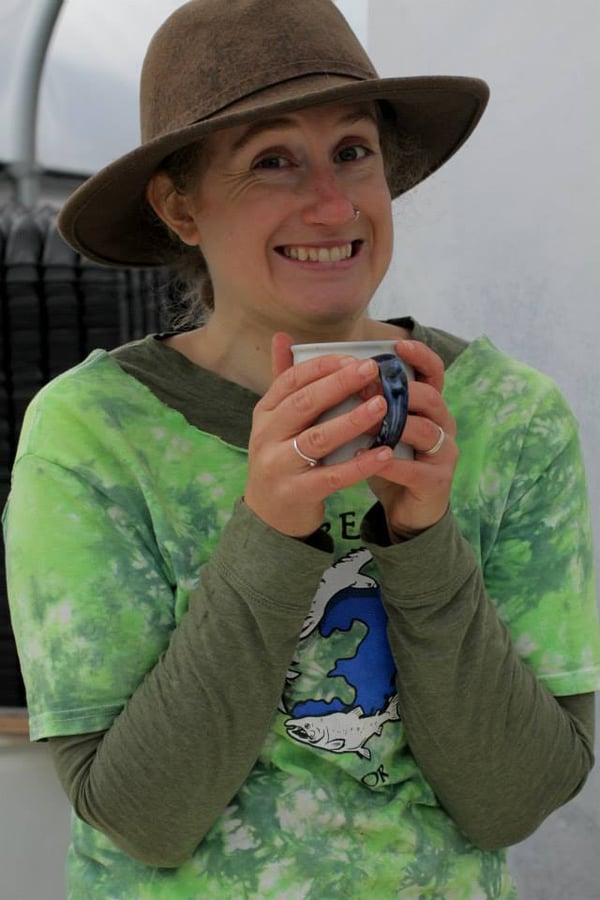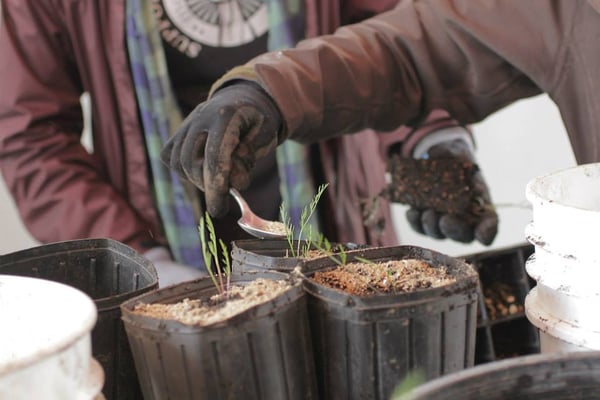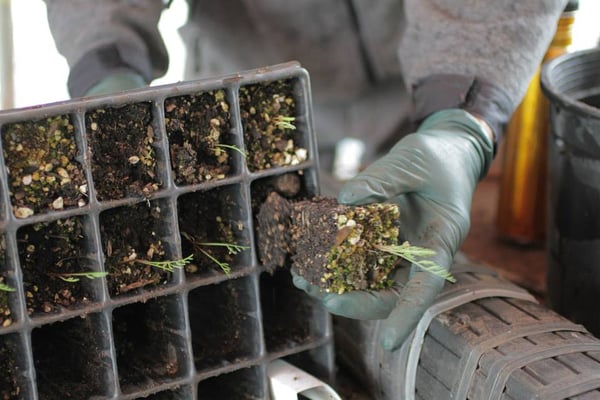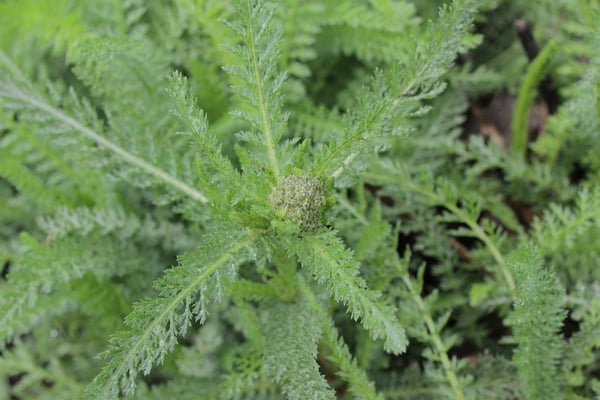Anna Bradley is our Domestic Farms Representative and is a member of our Green Team! In her spare time she is an herbalist, a teacher of nature connection and primitive skills to children and adults, and a singer/songwriter. Anna is a student of Columbine’s School of Botanical Studies and co-founder of Whole Earth Nature School.
Warm weather and spring showers have swept the Willamette Valley here in Oregon and that means volunteer season is underway! With the help of Alyssa, our Director of Sustainability, we partner with non-profits and get our hands dirty through the Mountain Rose River Project! This month, a crew of employees ventured out to support our local Friends of Buford Park & Mt. Pisgah’s Native Plant Nursery. We jumped at the chance to check out the two plant plots that we’re sponsoring – Trillium and Yarrow!
Upon arrival at the Native Plant Nursery we were greeted by Sarah, their friendly Volunteer Coordinator. She explained that in the last two years, the nursery has doubled in size due to an increasing demand for locally-sourced native plants. Mountain Rose Herbs volunteers are now part of that legacy and represent a handful of the hundreds of people that donate their time each year.
Our first mission of the day – compost! Grabbing gloves, wheel barrows, pitch forks, and a bucket of fertilizer we began to layer greens (grass and weeds), browns (dirt and leaves), and fertilizer to ensure proper composting. A light sprinkle followed by a short-lived downpour, did not stop our work or happy attitude. After completing the compost project we were led underneath a tent to begin transplanting a couple species of plants.
Hal, the Nursery Manager, walked us through proper transplanting techniques and kept us engaged with his extensive native plant knowledge. Here we began carefully tending to the little plant babies – Lomatium bradshawii . The two common names are Biscuit Root and Bradshaw’s Desert Parsley. This Lomatium species is only found here in the Willamette Valley and as far north as southwestern Washington and is endangered due to agriculture, competitive invasive plants, and animals such a voles.
Hal explained that instead of simply spreading the seed of these plants in their natural habitat, they had a far higher success rate growing them to maturity within the nursery and then transplanting. Once we completed our transplanting project it was time to get warmed up in the greenhouse with a cup of fresh stinging nettle tea harvested from the nursery. One of their plots was a huge square of beautiful stinging nettle getting ready to flower.
After lunch we were given a quick tour of a small portion of the nursery. Here we got to see rows and rows of a species of Monkey Flower Mimulus guttatus, Blue-Eyed Grass Sisyrinchium bellum (which is actually an Iris), and gorgeous flowering Larkspur Delphinium oreganum.
A familiar face that we ran into was the plot of Checker Mallow or Sidalcea spp. This same plant is growing in abundance just across the street from Mountain Rose Herbs in our neighborhood wetlands. It is in the Malvaceae Family (or Mallow) which is the same family as Marshmallow Root, Hibiscus Flowers, Linden Leaf and Flower, and Cacao Beans! Our local Sidalcea is a spring edible with lovely pink blossoms on a spike-like raceme.
Our day wrapped up with an exciting plant walk led by Jules, Communications and Development Manger. An excellent native and ethnobotanical resource, she took us on the newly reconstructed trails of Buford Park to see the plants in their native habitats. For a plant nut like me, this is like walking through a candy store. It is especially exciting seeing some of our native and non-native plants that we sell here at Mountain Rose Herbs.
The Wilamette Valley has our own Black Hawthorn species (Crataegus douglasii) and the non-native European Hawthorn Crataegus monogyna. We sell the berries along with the leaf and flower of the monogyna. Both trees are in full flower and are perfect for harvesting.
The local native Iris is our Iris tenax. April is the perfect time of year to find the incredible blue purple flowers. The leaves are very tough hence its botanical name tenax – Latin for tenacious. Historically, the leaves have been made into cordage and baskets due to its fibrous nature. You can find our own Iris that we sell called Blue Flag.
An unobtrusive tree is our very own Cascara Sagrada Rhamnus purshiana that grows natively here in the Northwest. Also called Chittum, this plant is well known for its laxative properties. We sell it in cut and sift and bark powder.
This is only the tiniest portion of all the plants we met on our walk. We are very thankful to all of the volunteers and employees of Friends of Buford Park and Mount Pisgah to take the time to work with us and pass on such valuable knowledge. Stay tuned for our next volunteer day adventure!
Learn more how you can support Friends of Buford Park and Mount Pisgah!

